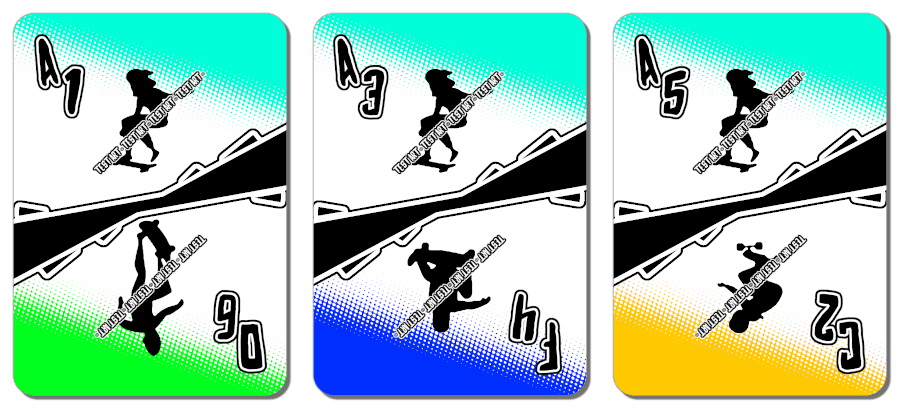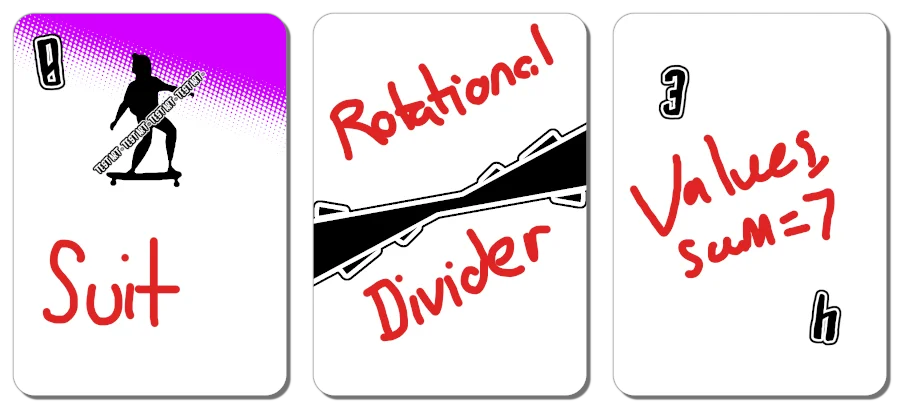Yeah I know I gave you the main post on this a week ago. I’m still thinking about it. Mainly I got thinking about how once you have the combinatorics done, this game creates a huge number of unique game pieces with only a small number of pieces.
Okay, so the game is basically a trick taker; you’re all playing skateboarders hanging out at the skate park, and you have multiple areas you can chain tricks from. This means you can use weak cards to try and build combinations nobody else can match or exceed, and you can try and goad people into trying tricks that they can’t do yet. Particularly, everyone has a unique deck of cards, with each card showing two suits. When I was working on prospective designs I belted out a draft and hated it and then, today, spent some time working on a draft I don’t hate.
Here are some examples of what the cards ‘should’ look like – each of these being from a different player’s deck:

There’s some strategic depth here created by knowing that your options are not the same as your opponent’s. See, here, if you’re the second player, you can use your F4 as an A to bait another player’s best D card. They have to follow suit, so if you’re willing to give up a 4 in F, you can get rid of an opponent’s 6 in D, and know that they won’t likely be able to oppose your own 6 later.
These cards are however, really simple once I realised I was overthinking things. Each card is made up of three simple parts:

Note that the rotational divider is entirely aesthetic, if I was feeling really fancy I could leave it out, but I like it. I’m not good at skateboard aesthetics.
Anyway, all of this is just standin filler components; the suits should probably not be letters, and if I was a more authentic skateboarding fan rather than a fan of it as a hypothetical, I could imagine each of those suits representing a common move that can be used to chain into more, complicated moves. The card art is also a filler piece, gained from a DuckDuckGo image search.
See, thing with this, the thing that lingers in my mind and why I kinda wonder about finding an artist who can breathe another layer of depth into this, is because with this handful of components I’ve managed to solve eighty cards in this game’s design. And once I have that suddenly proxying it up and practicing with it looks more simple, more feasible.